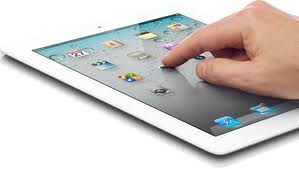As I’ve been settling in to my gig at Framehawk, I’ve been continuing to watch the cloud computing marketing closely (hello to everyone at Cloud Connect in Santa Clara this week). However, I’ve also been expanding that focus to mobility and how that relates to the enterprise market.
I’m finding a barrage of new stats about adoption come out almost daily. They are worth noting because this market is so new. And, even for those immersed in it day-to-day, they are pretty crazy.
I made note of a bunch of data points about mobile devices and the enterprise from my trip to CES a few weeks back and from articles in various trade journals as they have appeared recently. We’ve tweeted a few of them from @Framehawk; I thought I’d share a few of them here as well. Any conversation about the consumerization of IT or an enterprise’s “bring your own device” (BYOD) policy is going to start from (or certainly be colored by) these stats.
Frankly, lots of tablets

For something that didn’t exist only a few years ago, the tablet market has been downright explosive. It even pulled me in last year. According to research from the Displaysearch division of NDP, I bought one of the 72.7 million tablets sold in 2011. That was a 252% increase over 2010 -- the year the iPad made its debut.
And the growth isn’t showing any signs of stopping. Tablet sales are expected to grow 38.8% and hit approximately 248.6 million units sold by 2015, according to predictions from Transparency Market Research.
In the enterprise (the market we’re tracking closely at Framehawk), there is currently 1 tablet request for every 3 smartphones, says a Cisco survey.
It’s (currently) all about the iPad in the enterprise
From what the numbers say, and what we at Framehawk are hearing from customers, the enterprise market is currently all about the iPad. There are other devices that are being talked about, but only as a distant second choice. At least, for now.
However, just before CES, Sarah Rotman Epps of Forrester quoted some numbers saying that the percent of U.S. shoppers that preferred Android jumped from 9 to 18% in the first 9 months of 2011. During that same period, the number of folks that would actually prefer Windows dropped from 46 to 25% (still placing it higher than the numbers for Android).
Of course, as new form factors appear, and the initial “cool factor” of the iPad wears off, its dominance could fade. For example, Framehawk’s own CTO, Stephen Vilke, took a particular liking to the Samsung Galaxy Note he saw at CES, stylus and all ("This may sound crazy, but the stylus is more natural for a guy like me who spent his school years with a pen or pencil in my hand," said Stephen in a recent CNET article on the topic).
As new devices launch and gain adoption at the expense of others, enterprises must be ready to react.
After initial caution, enterprises are being more aggressive about adopting tablets
Despite a reputation for moving slowly, enterprise IT seems to be jumping into the adoption of tablets faster than you might expect.
After “testing the waters” in 2011, according to a Forrester report, companies are expected to buy $10 billion worth of iPads this year and $16 billion in 2013. This lends credence to some stats from Apple from October 2011 purporting that 93% of Fortune 500 companies have deployed or are testing iPads.
I’d definitely believe that projects to test how best to make use of these devices have sprung up nearly everywhere in the enterprise, despite a few hold-outs prohibiting their use for official purposes. On the other hand, production deployments, from what I can tell, are less likely at the moment, though there’s intense pressure to get there – and to do so quickly.
What will the impact of all this be in the enterprise?
This is a lot of change to absorb, especially for big organizations. People are getting used to how and when to use tablets versus their other computing devices. In fact, an IDG Connect study reported that 16% of their respondents claim their iPad has replaced their PC.
I find it unlikely (as did a few of my Twitter followers) that this 16% actually handed back their PCs, but the point is an interesting one. What devices does the IT infrastructure team need to optimize for now? What devices should be considered important by the mobile application development team? And is there a way to take all of these changes and uncertainties in stride?
Stay tuned…I’ll be tackling some of those questions (and, yes, highlighting some of ways Framehawk might help) in the near future.
In the meantime, let me know of any other jaw-dropping stats worth adding to this list. And, if you’re interested in any others that we dig up, follow @Framehawk – we tweet some of the more intriguing ones as we find them.




